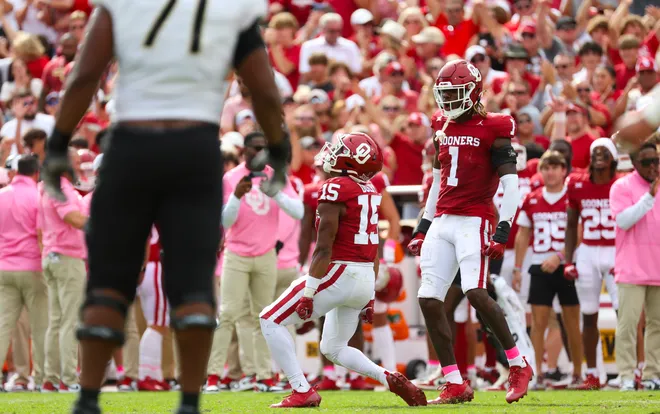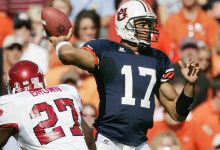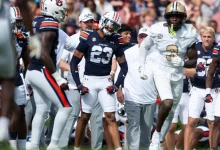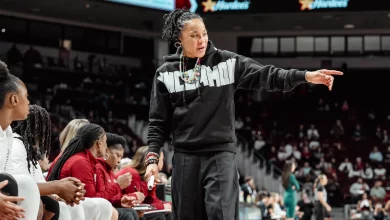According to Phil Steele, Oklahoma is expected to place approximately fourth or fifth in the SEC, based on his evaluation of their likely performance amid the conference’s intense competition.

The landscape of college football is a constantly evolving and fiercely competitive arena, especially within Power Five conferences like the SEC (Southeastern Conference). As teams transition between conferences or adapt to new levels of competition, predictions about their future performance often generate considerable interest and debate. Recently, renowned college football analyst Phil Steele projected Oklahoma to finish around fourth or fifth in the SEC standings. This forecast underscores not only Oklahoma’s current prospects but also the broader dynamics of the SEC’s power structure.
In this comprehensive analysis, we will explore the context behind Steele’s projection, the factors influencing Oklahoma’s potential performance, the strength and depth of the SEC, and what this prediction signifies for Oklahoma’s future in the conference. We will also examine the historical performance of Oklahoma and the SEC, compare rosters, coaching staff, recruiting, and other relevant factors that contribute to such a projection.
1. Background: Oklahoma’s Transition to the SEC
Oklahoma, historically a powerhouse in the Big 12 Conference, made a highly anticipated move to the SEC, beginning with the 2024 season. This transition has significant implications for the team’s future competitiveness and national relevance.
Oklahoma’s decision to join the SEC was driven by multiple factors: the desire for increased revenue, the opportunity to compete against traditionally stronger programs, and the pursuit of national championships. The move, however, comes with challenges: adapting to a more physically demanding and defensively stout conference, recruiting against SEC powerhouses, and building a roster capable of competing at the highest level.
2. Phil Steele’s Prediction: Context and Significance
Phil Steele, a well-respected college football analyst, is known for his detailed preseason magazines, statistical analysis, and predictions. His projection of Oklahoma finishing fourth or fifth suggests a cautious optimism tempered by recognition of the SEC’s depth.
Such a prediction is significant because it reflects Steele’s assessment of Oklahoma’s talent, coaching, and overall readiness relative to SEC programs. It also hints at the competitive environment Oklahoma will face and the challenges of immediately competing with established SEC powers.
3. The Strength of the SEC: An Elite Conference
The SEC is widely regarded as the most competitive and balanced conference in college football, boasting multiple programs with national championships, consistent top-10 rankings, and NFL-caliber talent.
a. Recent Dominance and Power Programs
Teams like Alabama, Georgia, LSU, and Auburn have dominated college football in recent years, winning championships and producing NFL talent. These programs have robust recruiting pipelines, excellent coaching staffs, and deep talent pools.
b. Depth and Competition
The SEC’s depth means that even programs considered “middle-tier” in the conference are highly competitive nationally. For Oklahoma to place in the top three or four, it must contend with programs that are perennial contenders.
c. Year-to-Year Variability
The SEC is known for its unpredictability; injuries, recruiting classes, coaching changes, and transfers can significantly influence standings.
4. Oklahoma’s Strengths and Challenges
a. Recent Performance and Recruiting
Oklahoma has a storied football history, with multiple national championships, Heisman Trophy winners, and a tradition of offensive innovation under coaches like Lincoln Riley. Their recruiting classes have been highly ranked, bringing in talented players.
b. Transition to SEC-Level Competition
While Oklahoma has excelled in the Big 12, the SEC’s physicality, especially on defense, presents new challenges. The offensive schemes that worked in the Big 12 may need adaptation to succeed against SEC defenses.
c. Coaching and Staff
The coaching staff, led by Brent Venables, brings experience and defensive expertise, crucial for SEC success. However, integrating new systems and adjusting to the conference’s style will be vital.
d. Depth and Talent Gaps
While Oklahoma’s roster is talented, the overall depth compared to SEC programs may be a concern initially. The SEC’s recruiting prowess often results in more physically developed players, which can influence early performance.
5. Factors Influencing Oklahoma’s Projected Placement
a. Immediate Competitiveness
Oklahoma’s immediate success depends on how quickly they adapt to SEC styles, integrate transfers, and develop young talent.
b. Recruiting and Development
Continued recruiting success and player development are essential to climb the standings. The SEC’s recruiting dominance means Oklahoma must elevate its efforts to compete.
c. Schedule Difficulty
The SEC schedule is rigorous, with each week presenting a potential challenge. Early losses or close games could impact Oklahoma’s standing.
d. Injuries and Variability
Injuries to key players or coaching changes can shift a team’s trajectory significantly, especially in a highly competitive environment.
6. Historical Perspective: Oklahoma and SEC vs. SEC Programs
a. Oklahoma’s Historical Performance
Oklahoma has been a national powerhouse, with multiple national titles and a high winning percentage. However, most of this success was achieved within the Big 12, which historically has been less defensively rigorous than the SEC.
b. SEC Powerhouses’ Dominance
SEC schools like Alabama and Georgia have sustained success, with consistent top-tier recruiting, coaching stability, and national championships.
c. Transition Challenges
Historically, teams moving into the SEC have faced an adjustment period. For example, Texas A&M’s transition saw a gradual climb, but it took several years to establish dominance.
7. What Does a Fourth or Fifth Place Finish Mean for Oklahoma?
a. Short-Term Perspective
In the first few years, a fourth or fifth-place finish would be a solid outcome considering the strength of the conference and Oklahoma’s adjustment period. It suggests the team is competitive but has room to improve.
b. Long-Term Outlook
Over time, Oklahoma aims to contend for SEC titles and national championships. Finishing in the top tier consistently will require sustained recruiting, coaching excellence, and roster development.
c. Fan Expectations and Program Development
Fans and boosters expect immediate success, but realistic expectations acknowledge the transition’s complexity. A fourth or fifth-place finish does not preclude future championships but highlights the need for patience and strategic planning.
8. Strategies for Oklahoma to Improve Standing
a. Recruiting Enhancements
Targetting SEC-level talent, leveraging NIL opportunities, and building strong regional ties will be crucial.
b. Coaching and Scheme Adjustments
Adapting offensive and defensive schemes to SEC standards, emphasizing physicality and versatility.
c. Player Development
Focusing on conditioning, skill development, and fostering a culture of resilience.
d. Scheduling and Game Preparation
Maximizing non-conference games to build confidence and preparing meticulously for SEC opponents.
9. Broader Implications
a. Impact on Conference Dynamics
Oklahoma’s integration into the SEC will influence scheduling, recruiting, and competitive balance.
b. National Championship Aspirations
While immediate placement might be modest, the ultimate goal remains competing for national titles within the SEC.
c. Broader College Football Landscape
Oklahoma’s move signifies a broader shift in college football power dynamics, emphasizing the importance of conference strength and media deals.
Phil Steele’s projection of Oklahoma finishing around fourth or fifth place in the SEC reflects a realistic assessment of the challenges and opportunities that lie ahead for the Sooners. Transitioning to the SEC is no small feat; it requires strategic adjustments in recruiting, coaching, player development, and game-day execution.
While initial standings might not mirror Oklahoma’s historic dominance in the Big 12, the move represents a pathway toward sustained excellence at the national level. Over time, with proper investments and adaptations, Oklahoma has the potential to climb the SEC standings, compete for championships, and solidify its place among the elite programs in college football.
This projection underscores the competitive depth of the SEC and highlights the importance of patience and strategic growth for Oklahoma as they embark on this new chapter in their storied football history.









